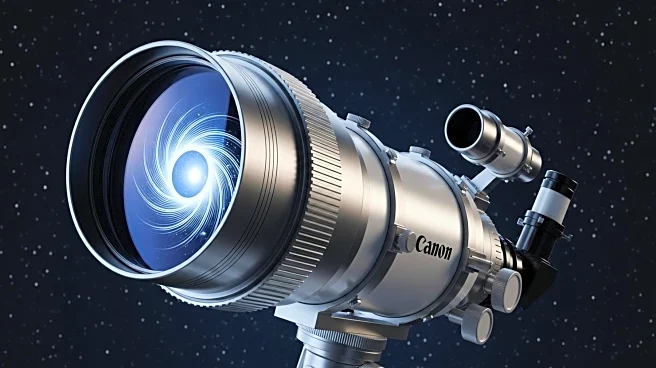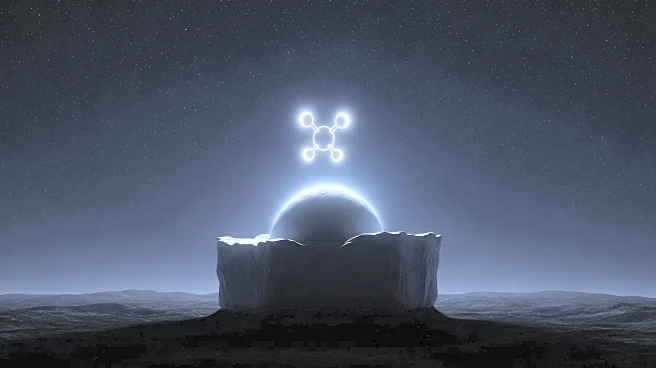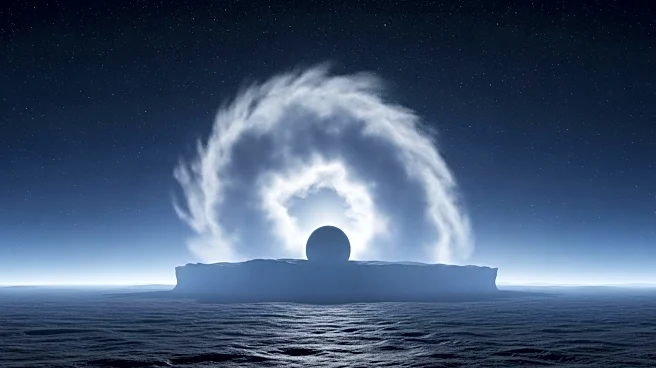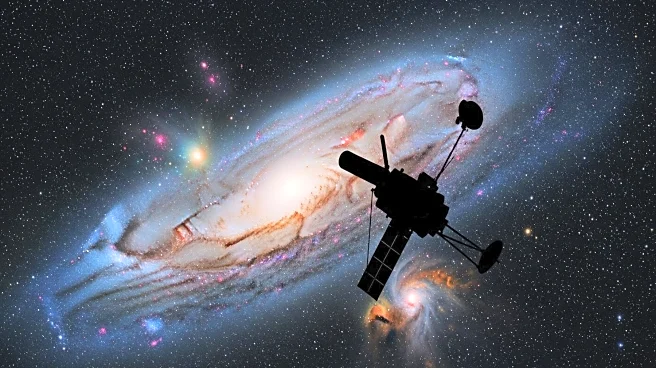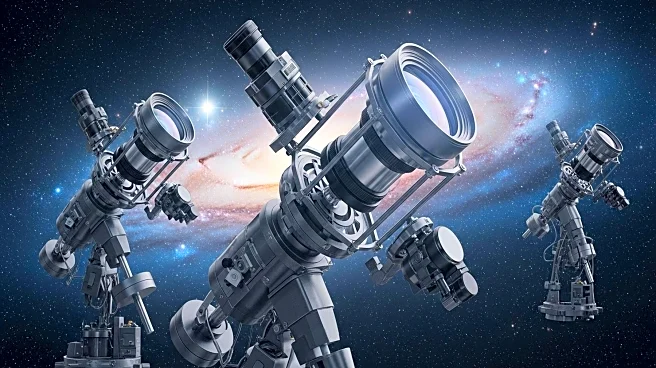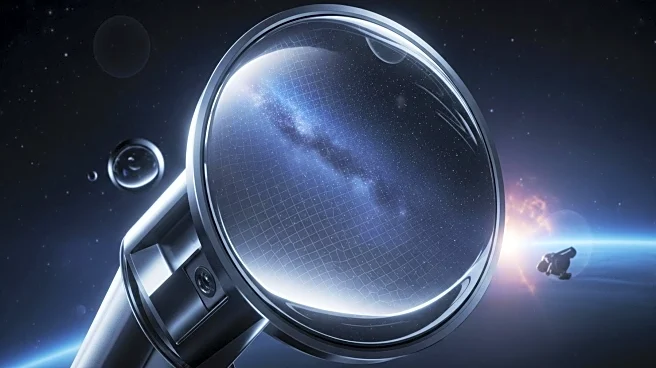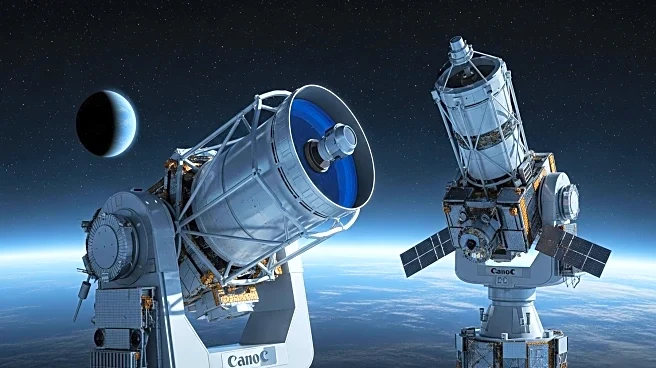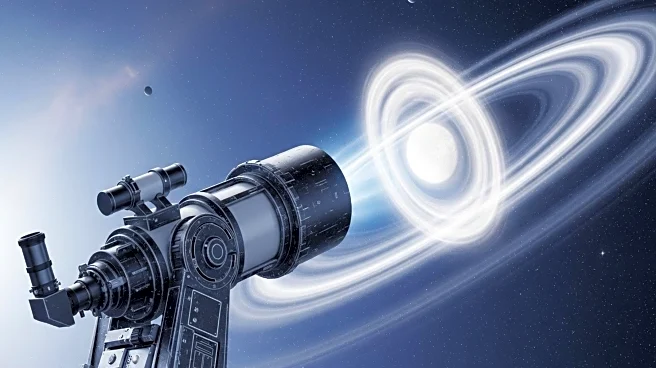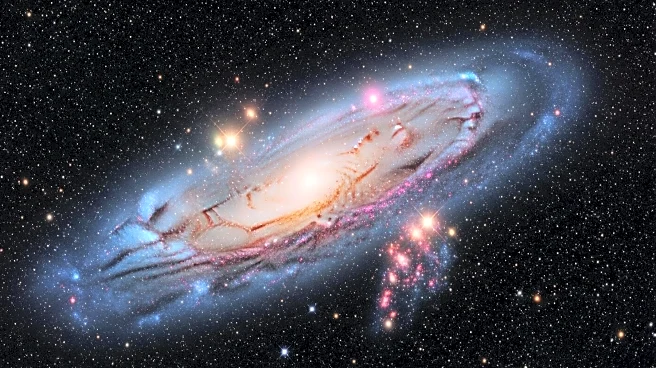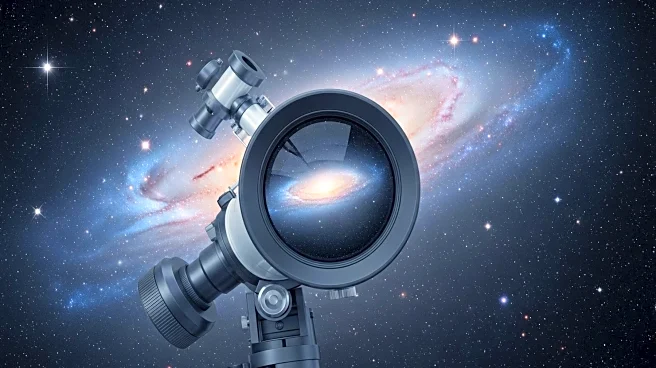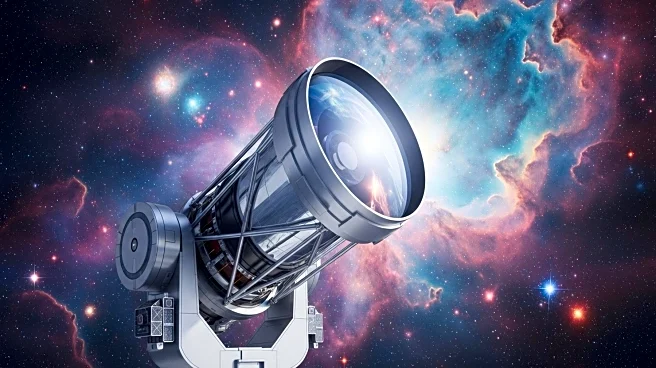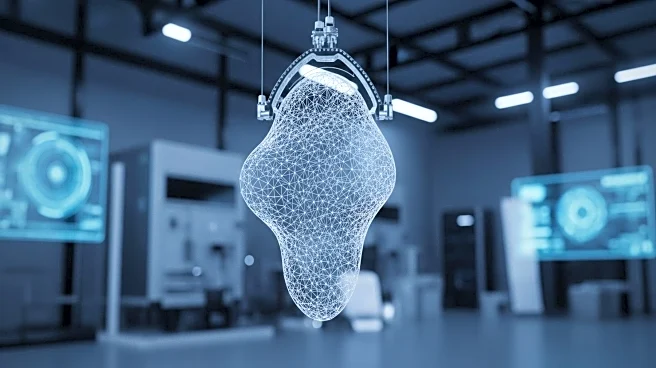What is the story about?
What's Happening?
NASA's Jet Propulsion Laboratory (JPL) is advancing the capabilities of the optical vortex coronagraph, a tool designed to improve the observation of celestial bodies by rejecting broadband light. The project, led by Eugene Serabyn, aims to enhance the coronagraph's performance from monochromatic to broadband light, achieving pseudostarlight rejection at the 10^-9 level. This involves testing with JPL's Compact Coronagraph (CC) testbed and utilizing various facilities such as a polarizing microscope and a polarization spectrometer. The goal is to refine the vortex masks for efficient use in high-contrast environments, which is crucial for NASA's future coronagraphic missions like Exo-C and HabEx, as well as large ground-based telescopes.
Why It's Important?
The development of the optical vortex coronagraph is significant for astrophysics and space exploration. By improving the ability to block out starlight, this technology allows for clearer observation of exoplanets and other celestial phenomena. This advancement supports NASA's strategic goals in astrophysics, potentially aiding missions that seek to discover and study planets outside our solar system. The technology's application in both space-based and ground-based telescopes could lead to breakthroughs in understanding the universe, benefiting scientific communities and enhancing public knowledge of space.
What's Next?
The next steps involve further testing and refinement of the vortex masks to ensure they meet the high standards required for NASA's missions. The successful implementation of this technology could lead to its integration into upcoming projects like the NASA-funded balloon project Picture-C, which requires broadband vortices. Continued development will focus on maximizing efficiency and minimizing costs, ensuring that the technology is ready for deployment in future space observation missions.
Beyond the Headlines
The optical vortex coronagraph represents a leap forward in observational technology, with potential implications for the search for extraterrestrial life. By enabling more precise imaging of distant planets, scientists can better analyze atmospheric conditions and surface features, which are critical in assessing habitability. This technology also underscores the importance of interdisciplinary collaboration in advancing space exploration, combining expertise in optics, engineering, and astrophysics.
AI Generated Content
Do you find this article useful?
